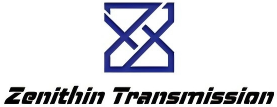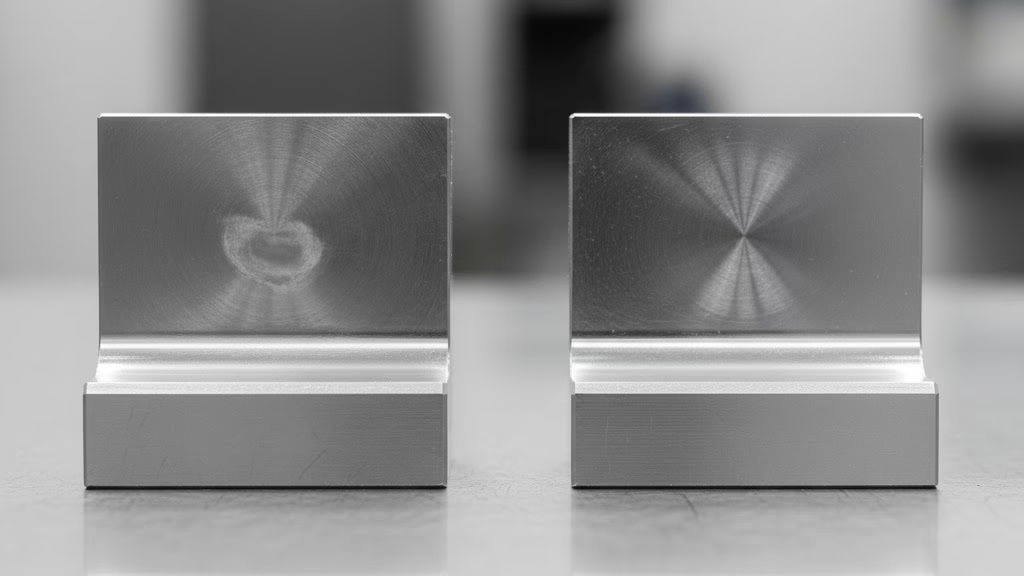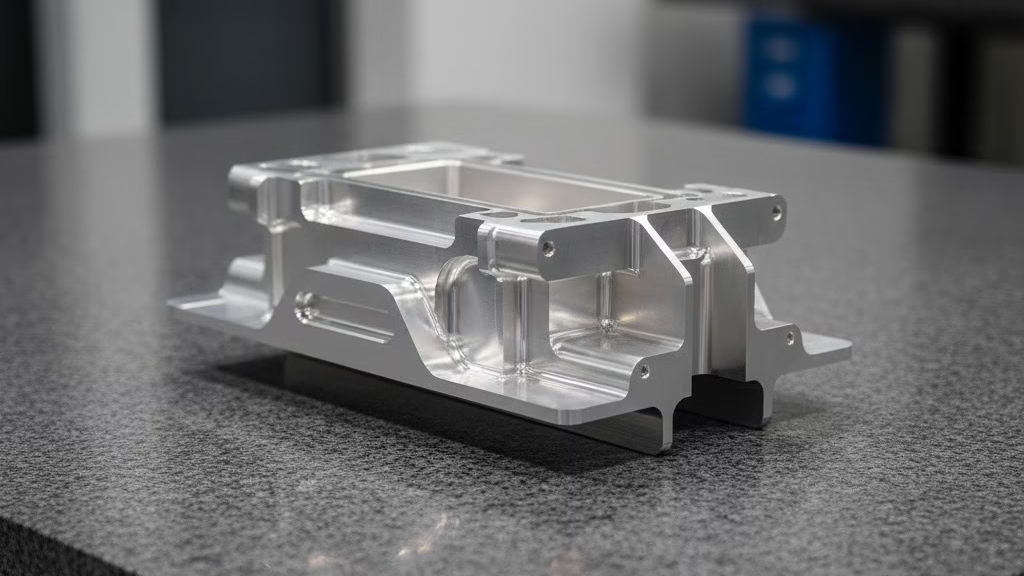Stop guessing which machining process is right for your project and budget. This guide provides a proven, data-driven framework to help you confidently decide between 3-axis and 5-axis machining. We’ll show you how to look beyond the quote and calculate the true cost to avoid expensive mistakes.
Choose 3-axis machining for simpler, prismatic parts with features on a few parallel faces, as its lower hourly rate makes it more cost-effective. Opt for 5-axis machining when a part has complex geometry, requires machining on five or more faces, or has tight positional tolerances between features. While its hourly rate is higher, 5-axis reduces total cost by eliminating multiple setups, decreasing lead time, and improving accuracy.
Now, let’s dive into the decision scorecard and real-world case studies that show you exactly when 5-axis is actually the cheaper option.
Calculating the True Cost
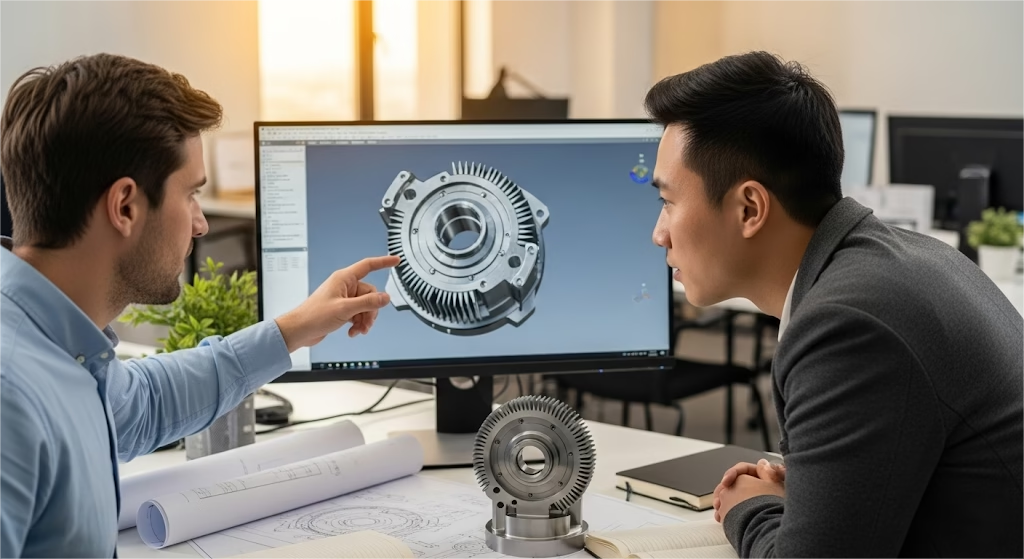
Let’s get one thing straight: a 5-axis machine costs more to run. You’re looking at an hourly rate of $150 to $325, easily double or triple the $75 to $125 per hour for a standard 3-axis machine.
Seeing that price difference on a quote, it’s tempting to immediately choose the cheaper option. But here’s a hard-won piece of industry insight: the price on the quote is not the total cost of the part.
The real calculation is the Total Cost of Ownership, which includes all the hidden expenses that pop up after the part arrives at your door.
I once worked with a startup developing a high-end handheld medical device. The design was ergonomic and complex, requiring machining from multiple angles. They received two quotes:
- Supplier A (3-axis): $1,800, 3-week delivery.
- Supplier B (5-axis): $2,400, 2-week delivery.
To control their initial R&D budget, they chose Supplier A, saving $600. That decision turned into a costly mistake. The 3-axis shop used six different setups to create the part. The result? A two-week delay, bringing the total time to five weeks. Worse, the accumulated errors from re-fixturing meant the internal components wouldn’t fit.
The startup had to pull three of their senior engineers off critical tasks to spend three full days manually reworking the prototype just to get it ready for a key investor demo.
They “saved” $600 on the quote but paid dearly in hidden costs: two weeks of project delay and roughly $5,040 in wasted engineering time. That one experience perfectly illustrates how the cheapest quote can quickly become the most expensive problem.
Quantify Your Choice, Don’t Just Guess
So, how do you move beyond gut feelings and make a data-driven choice for your specific part? You can use a simple decision scorecard.
This isn’t about complex math; it’s about systematically evaluating your design against key manufacturing criteria. By assigning points to different aspects of your project, you can get a clear, quantitative recommendation.
Let’s walk through the factors you should score:
First, consider geometric complexity. Does your part have undercuts or side-action holes? If so, give it 5 points. Is it dominated by complex 3D surfaces, like a turbine blade? That’s another 5 points. Simple, prismatic shapes get a 0 or 1.
Next, count the number of faces that require machining. If you only need to work on one to three faces, that’s a 1-point job. Four faces? Give it 3 points. For parts needing work on five or even all six faces, award it a full 5 points, as the number of setups for a 3-axis machine starts to skyrocket.
Then, look at your tolerance requirements. Are the positional tolerances between features tighter than ±0.002 inches (±0.05mm)? If so, that’s a 5-point feature. Why?
Because every time you re-fixture a part on a 3-axis machine, you introduce a potential for error. 5-axis machining avoids this by completing the part in a single setup, as noted by Pete Zelinski of Modern Machine Shop, who emphasizes that the primary benefit is often performing more work in a “single handling” to increase efficiency and precision.
This same core principle of setup elimination is also the key factor analyzed in our Turn-Mill vs. Traditional Lathe guide.
Don’t forget material cost. If you’re machining a large block of an expensive material like titanium or PEEK, give it 4 points. A single mistake during a late-stage setup on a 3-axis machine can turn a pricey piece of stock into scrap, a risk significantly reduced with single-setup 5-axis machining.
Finally, what’s your lot size? For prototypes or runs under 10 pieces, score it 3 points. For batches between 10 and 200, it’s a 5. For very large batches over 200, the score drops back to 1, as the cost of creating highly efficient, custom fixtures for a 3-axis machine may become more economical.
Now, tally it up:
| Total Score | Recommendation | Primary Rationale |
|---|---|---|
| Below 10 points | Use 3-Axis | Lower hourly rate is most cost-effective. |
| 10-18 points | Gray Zone | Requires detailed, competing quotes to confirm. |
| Above 18 points | Use 5-Axis | Savings from fewer setups outweigh higher rate. |
From ‘One-Piece Flow’ to a Performance Leap: The Hidden Value of 5-Axis Machining
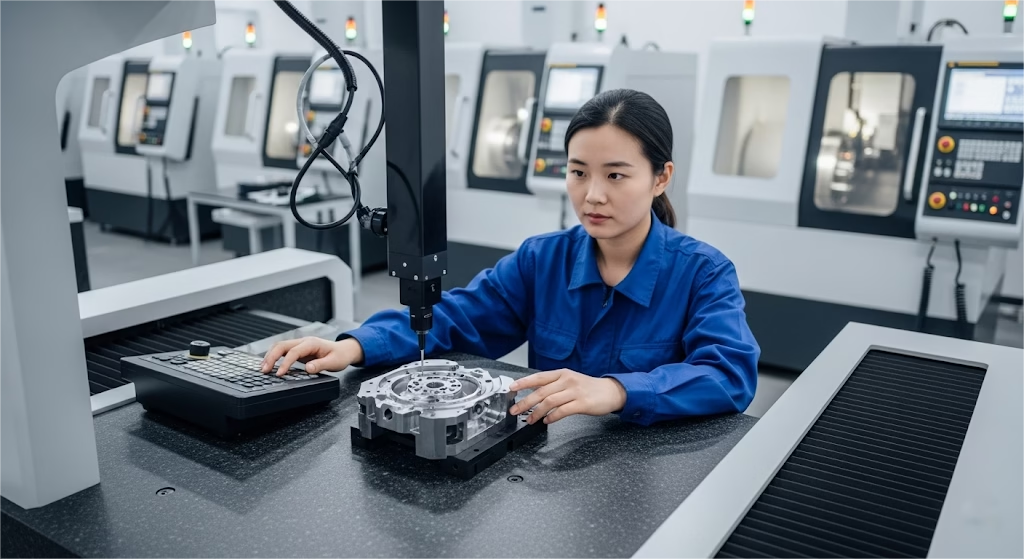
So, what exactly are you buying with that higher 5-axis price tag? It’s more than just a fancy machine; you’re investing in superior outcomes that directly impact your project’s success. This is where the advanced our 5-axis CNC machining capabilities move from a cost center to a value creator.
First, let’s talk about precision. Every time you unclamp and re-clamp a part, you introduce a small positioning error, often around ±0.0002 inches.
This might seem tiny, but if a part requires five setups, those errors can stack up to ±0.001 inches or more. 5-axis machining all but eliminates this cumulative error by completing the part in one or two setups, a process that relies on advanced 5-axis workholding.
As Mike Cope, a former technical specialist at machine tool builder Hurco, often explained, “The most significant advantage of 5-axis machining is the ability to machine complex shapes in a single setup… The ‘done-in-one’ philosophy is where the real return on investment is found.”
This single-setup approach is the closest you can get to a perfect “one-piece flow” in manufacturing, ensuring every feature is exactly where your CAD model intended it to be.
But the value goes beyond just holding tighter tolerances. Consider the experience of an aerospace client I worked with. They had a fuel nozzle assembly originally designed as four separate aluminum parts that were later joined by high-precision brazing. The process was expensive, and the 15% scrap rate from welding failures was a constant headache.
During a design review, we asked a radical question: “Can we eliminate the welding entirely and make this a single piece?” Using a 3-axis mindset, the complex internal channels made it impossible. But by thinking with a 5-axis mindset, we redesigned the nozzle as a monolithic part. A 5-axis machine could navigate a tool deep inside the part to create the intricate fluid pathways.
The result? The single 5-axis part was more expensive to machine than any of the four original components, but the total assembly cost dropped by 30% by eliminating the brazing process and its associated scrap rate. This is the true power of the technology: 5-axis isn’t just a tool for making existing parts; it’s a key that unlocks fundamentally better, more integrated, and higher-performing designs.
Ready to Leverage 5-Axis Machining?
If your part has complex geometries or requires multiple setups, our advanced 5-axis CNC machining services can reduce your total cost and accelerate your timeline. Let our experts provide a DFM analysis for your project.
Design for Manufacturability: A DFM Cheat Sheet to Lower Costs
The most powerful tool for controlling cost isn’t on the shop floor; it’s right there in your CAD software. Smart design choices, made with the manufacturing process in mind, can dramatically reduce the price of a machined part. Here is a quick Design for Manufacturability (DFM) cheat sheet to guide your decisions from the very beginning.
Optimizing for 3-Axis: The Path of Simplification
If your analysis points toward 3-axis machining, your goal is to make the part as easy as possible for the machine to access. Understanding the specific capabilities of 3-axis milling is key here. Think clean lines and simple features.
- Keep Features Parallel: Design features on planes that are parallel to each other to minimize setups.
- Avoid Undercuts: If possible, design out features that require the tool to cut sideways underneath a surface.
- Increase Corner Radii: Larger internal corner radii allow for the use of bigger, more rigid tools, which speeds up machining time. A good rule of thumb is to make the radius greater than the tool’s radius.
- Design Flat Pockets: Whenever you can, design pockets with a flat bottom to avoid the lengthy finishing operations required for contoured surfaces.
Optimizing for 5-Axis: The Path of Consolidation
When designing for 5-axis, you can throw out some of the old constraints.
In fact, following a detailed DfM guide for optimizing parts shows how complexity can actually lead to cost savings if it means a more functional, integrated part.
- Embrace Part Consolidation: Look for opportunities to combine multiple components into a single, monolithic part. This eliminates assembly, welding, or bonding costs and creates a stronger final product.
- Use Complex Angles: Don’t shy away from designing angled holes and chamfers. These are exactly what 5-axis machines excel at creating in a single setup.
- Optimize Thin-Walled Structures: 5-axis toolpaths can approach thin walls from multiple angles, allowing for better support and reduced vibration, which results in a better surface finish and higher accuracy.
Finding the Right Partner: How to Write an Expert-Level RFQ
Your design is optimized, and you’ve scored your project. Now comes the most critical step: engaging with a machine shop. The quality of your Request for Quotation (RFQ) directly impacts the quality of the quotes you receive.
But it’s not just about getting a price; it’s about finding a true manufacturing partner.
Here’s an industry secret: not all shops with a 5-axis machine are 5-axis experts. Many traditional shops buy the equipment to check a box but lack the deep expertise—the “5-axis mindset”—to truly leverage it.
Their programmers and machinists still think in terms of 3-axis setups, lacking the advanced 5-axis programming strategies needed to prevent errors, which can lead to inflated quotes or unforeseen problems.
How do you tell the difference? A true 5-axis partner thinks about process optimization, not just executing your drawing. They are proactive. You can identify them by asking one simple, powerful question in your RFQ:
“Based on your experience, are there any DFM suggestions you would make to this design to lower its cost or improve its performance using your 5-axis capabilities?”
A shop that just “has the machine” will likely reply, “We have quoted per your print.” But a true expert will come back with valuable feedback, suggesting ways to consolidate parts or tweak features to make the machining process more efficient.
To get this level of feedback, your RFQ needs to be professional and complete. Here’s what to include:
- 3D CAD Model: A STEP file is universal and preferred.
- 2D Engineering Drawing: A PDF that clearly specifies all critical dimensions, GD&T callouts, surface finish requirements, and material specifications.
- Quantity Breaks: Ask for pricing at different volumes (e.g., 1, 10, 50, 100 pieces) to understand cost scaling.
- Key Features: Highlight the most critical functional surfaces and tolerances so the shop knows where to focus their attention.
Providing a complete package not only ensures you get an accurate quote but also signals to the machine shop that you are a serious, knowledgeable customer, paving the way for a productive partnership.
Conclusion: Making Your Decision with Confidence
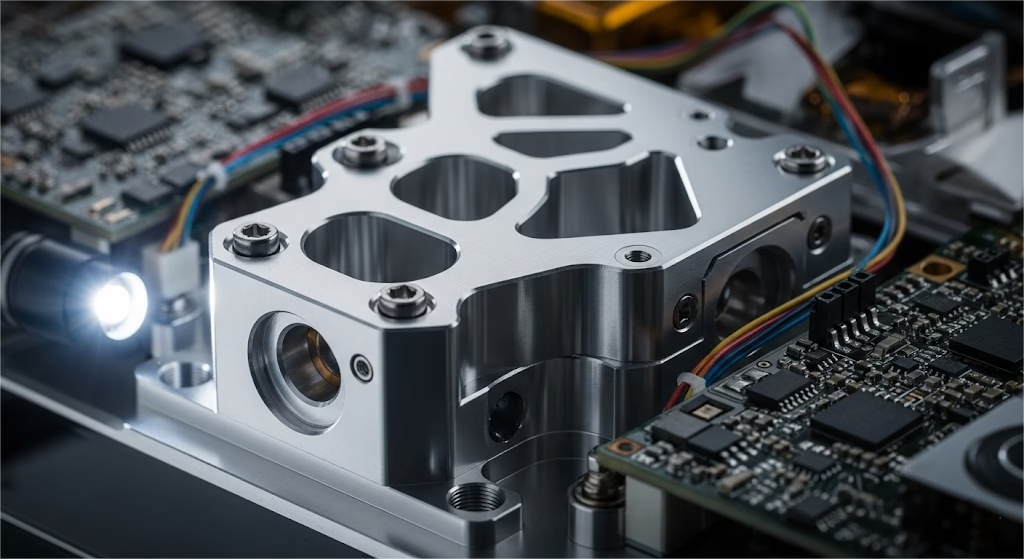
The debate between 3-axis vs. 5-axis machining is about much more than just the machines themselves. It’s about a fundamental shift in mindset.
It’s about moving from comparing superficial quotes to analyzing total project cost. It’s about evolving from being a passive designer to an active partner in the manufacturing process.
By understanding the hidden costs of extra setups and the immense value of design consolidation, you can make choices that save not just money, but your most valuable resource: time.
We’ve walked through the key frameworks to empower your decision-making. You have the Decision Scorecard to quantify your needs, the DFM Cheat Sheet to optimize your design from the start, and the expert-level RFQ template to find a true manufacturing partner.
You are now equipped to navigate the complexities of 3-axis vs. 5-axis machining with clarity and confidence.
Ready to put this knowledge into action? Send us your CAD file. Our team of application engineers will provide more than just a quote; you’ll receive a detailed DFM analysis and a transparent recommendation on the most cost-effective manufacturing path for your specific project. Let’s build it right, together.
Ready to Start Your Project?
You’ve analyzed the options. Now let our experts provide a professional quote and DFM feedback to ensure your project’s success.
References & Notes
[1] Total Cost of Ownership: This concept extends beyond the initial purchase price to include all direct and indirect costs associated with a part or product over its entire lifecycle, including quality control, assembly, and potential failure costs.
[2] One-Piece Flow: A core principle of Lean Manufacturing where parts are processed one at a time through a series of steps in a continuous flow, minimizing waste like waiting and transportation. 5-axis single-setup machining is a practical application of this principle.
